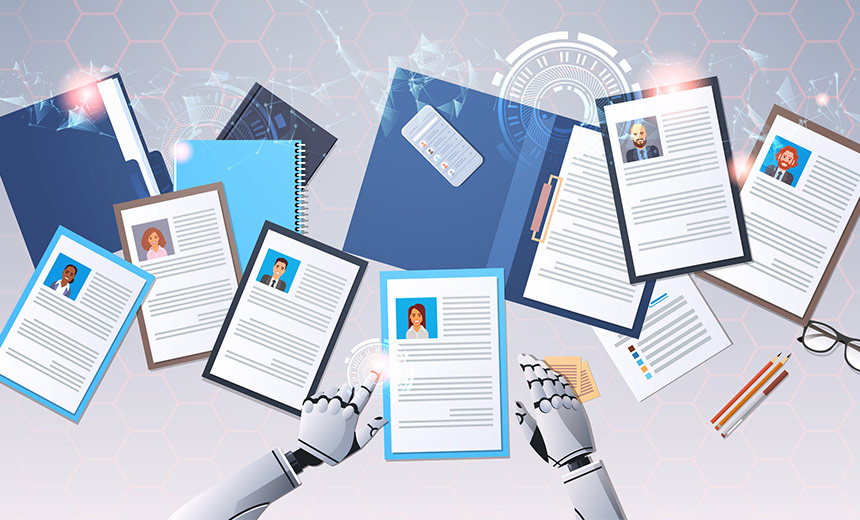Artificial Intelligence & Machine Learning
,
Next-Generation Technologies & Secure Development
,
Recruitment & Reskilling Strategy
How ChatGPT Can Help You Write Your Job Application Documents

In a competitive job market, standing out from the crowd is crucial. Artificial intelligence offers innovative tools to refine your job application materials. This guide provides practical steps on how to use one common tool, ChatGPT, to enhance your resume and cover letter, ensuring they capture the attention of potential employers.
See Also: The Cybersecurity Swiss Army Knife for Info Guardians: ISO/IEC 27001
ChatGPT is a variant of the generative pre-trained transformer models developed by OpenAI and designed to generate text based on the prompts it receives. It can be an invaluable tool for generating content, providing suggestions and even refining the language in your job application documents.
Practical Steps for Using ChatGPT to Enhance Resumes and Cover Letters
Step 1: Preparation
Before diving into ChatGPT, gather all necessary materials.
- Current resume and cover letter: Have your latest versions ready for review and enhancement.
- Job descriptions: Collect several job descriptions for positions you are interested in. These will guide ChatGPT in customizing your documents.
Step 2: Initial Drafts
Use ChatGPT to help draft your new resume and cover letter.
- Generate resume entries: Ask ChatGPT to provide examples of job descriptions or responsibilities for your past roles. For instance, you can input your job title and a brief description of your duties and request a detailed expansion.
- Draft a cover letter: Prompt ChatGPT with the specifics of the job you are applying for and your professional background and key skills. Request it to draft a cover letter that aligns your skills with the job requirements.
Step 3: Customization
Customization is key to making your application stand out.
- Optimize for keywords: Enter the job description into ChatGPT and ask for important keywords to include in your resume and cover letter. This helps tailor your application to pass through Applicant Tracking Systems or ATS.
- Refine the language: Use ChatGPT to improve the language of your resume and cover letter. For example, you can ask for a more professional tone or specific action verbs that give your achievements more impact.
Step 4: Feedback and Revision
After using ChatGPT to update your documents, your work is not done.
- Request constructive feedback: Share your updated resume and cover letter with mentors or peers. Ask for specific feedback on clarity, impact and how well your documents meet the job criteria.
- Revise your documents: Use the feedback to make final adjustments. You can go back to ChatGPT for help rephrasing or further tailoring your documents based on the feedback received.
Step 5: Continuous Improvement
The job market and AI capabilities are always evolving. Keep your documents up to date.
- Make regular updates: Periodically review and update your resume and cover letter with new skills, experiences and roles.
- Stay Informed: Keep up with new features and capabilities of AI tools such as ChatGPT that can aid in your job search.
Using ChatGPT to create and refine resumes and cover letters can significantly streamline your job application process, making it more efficient and tailored to specific job opportunities. By following the steps above, you can ensure that your application materials are comprehensive and polished and that they resonate with the nuances of the job descriptions.
AI tools make drafting resumes and cover letters more efficient. They save time by quickly generating multiple tailored versions and suggesting improvements based on specific job descriptions. AI maintains consistency across documents, reduces errors by spotting grammatical mistakes and typos, and enhances language to make your achievements stand out more effectively, ensuring a professional and polished presentation.
Pitfalls to Avoid When Using ChatGPT
Using AI to assist in writing resumes and cover letters offers several benefits, but there are also common pitfalls that you need to avoid.
Lack of Personal Touch
While AI can generate content based on input, it may lack the personal touch and the nuanced understanding of your unique experiences and personality traits. Carefully review and adjust the resulting documents to make sure they don’t feel too generic.
Overdependence on Keywords
AI’s focus on optimizing for ATS by including specific keywords can sometimes lead to resumes and cover letters that are overly optimized and unnatural. This might detract from a genuine presentation of skills and experiences. It may help to run the output through an AI checker, such as Undetectable AI, to determine if it sounds too mechanical.
Privacy Concerns
Using online AI tools often requires uploading personal data, including work history. There’s always a risk associated with data privacy, depending on the security measures taken by the AI service provider. To make informed decisions, read the terms of service regarding your privacy.
Generic Responses
There’s a risk that AI-generated content can be too generic. Many users may end up with similar-looking resumes and cover letters, which can reduce the distinctiveness of your application in a pool of candidates. Be sure to add your voice and character to the documents.
While AI provides a powerful tool for automating and enhancing the process of writing resumes and cover letters, it’s important to use it as a complement to your own insights and inputs. Review and customize AI suggestions to ensure they accurately reflect your individuality and professional ethos. Balancing the efficiency of AI with a personal review process allows job seekers to present themselves in the most favorable light. So, give it a try and make the most of both technological advances and personal authenticity.
